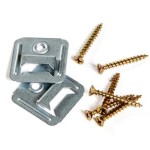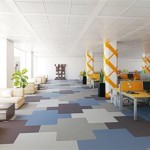Vinyl Wood Look Flooring Planks: A Comprehensive Guide
Vinyl wood look flooring planks have emerged as a popular alternative to traditional hardwood flooring, offering a compelling blend of aesthetics, durability, and affordability. This type of flooring replicates the natural beauty of wood grain and textures while providing the practical benefits of vinyl. This article delves into the key aspects of vinyl wood look flooring planks, examining their composition, advantages, installation, maintenance, and suitability for various applications.
Vinyl flooring, in general, encompasses a range of products, from sheet vinyl to tiles and planks. Vinyl wood look planks specifically are designed to mimic the appearance of real wood flooring, offering a visually appealing and cost-effective alternative. These planks consist of multiple layers, each contributing to the flooring's overall performance and durability. Understanding these layers is crucial for evaluating the quality and suitability of a particular product.
The typical construction of a vinyl wood look plank includes a backing layer, a core layer, a print layer, and a wear layer. The backing layer provides stability and cushioning, often incorporating enhancements for sound insulation and moisture resistance. The core layer is the structural foundation of the plank, typically made of PVC (polyvinyl chloride) or WPC (wood-plastic composite) or SPC (stone plastic composite). The print layer is a high-resolution photographic image that replicates the appearance of wood, including its grain patterns, knots, and color variations. Finally, the wear layer is a transparent protective coating that safeguards the print layer from scratches, stains, and wear.
Understanding the Composition and Construction
The core layer of vinyl wood look flooring is a critical element that significantly impacts the flooring's overall performance. Different core materials offer varying degrees of rigidity, dimensional stability, and water resistance. PVC cores are a traditional option, providing a balance of affordability and durability. WPC cores, made from a blend of wood flour and plastic, offer enhanced water resistance and a softer underfoot feel. SPC cores, composed of limestone and PVC, are known for their exceptional rigidity, dimensional stability, and resistance to indentation. The choice of core material should be based on the specific requirements of the installation environment, considering factors such as moisture levels and foot traffic.
The wear layer is another crucial factor determining the longevity and durability of vinyl wood look flooring. Measured in mils (thousandths of an inch), the wear layer protects the underlying print layer from damage. Thicker wear layers offer greater resistance to scratches, scuffs, and stains, making them suitable for high-traffic areas and homes with pets or children. Wear layers commonly range from 6 mils to 20 mils or higher. A wear layer of 12 mils or greater is generally recommended for residential applications, while commercial settings may require thicker wear layers.
The print layer is responsible for the aesthetic appeal of the flooring. High-quality vinyl wood look planks utilize advanced printing technologies to create realistic wood grain patterns and textures. Embossed-in-register (EIR) technology is a common technique that aligns the embossing with the printed image, creating a more authentic wood-like feel and appearance. The print layer should be fade-resistant and UV-protected to maintain its color and clarity over time.
Advantages of Vinyl Wood Look Flooring
Vinyl wood look flooring planks offer several significant advantages over traditional hardwood flooring, including cost-effectiveness, water resistance, durability, ease of installation, and low maintenance requirements. These benefits make vinyl planks a versatile and practical flooring solution for various applications.
Cost-effectiveness is a primary driver for the popularity of vinyl wood look flooring. Compared to solid hardwood or engineered hardwood, vinyl planks are significantly more affordable, both in terms of material costs and installation expenses. This allows homeowners to achieve the desired aesthetic of wood flooring without exceeding their budget. The lower cost also makes vinyl planks an attractive option for rental properties and commercial spaces where cost management is a priority.
Water resistance is another key advantage of vinyl wood look flooring. Unlike hardwood, which is susceptible to water damage, vinyl planks are typically waterproof or highly water-resistant. This makes them suitable for installation in areas with high moisture levels, such as bathrooms, kitchens, and basements. The water-resistant properties of vinyl planks also make them easier to clean and maintain, as spills and accidents can be quickly wiped away without causing permanent damage.
Durability is a major selling point of vinyl wood look flooring. The layered construction and protective wear layer provide excellent resistance to scratches, stains, and impacts. High-quality vinyl planks can withstand heavy foot traffic, making them suitable for both residential and commercial applications. The durability of vinyl flooring also contributes to its longevity, reducing the need for frequent replacements. Selecting a product with an appropriate wear layer thickness for the intended use is crucial for maximizing its lifespan.
Ease of installation is another significant advantage. Many vinyl wood look planks are designed with click-lock systems, allowing for a floating installation that does not require adhesives. This simplifies the installation process and reduces installation costs. DIY enthusiasts can often install vinyl planks themselves, saving on professional labor fees. Some vinyl planks also come with pre-attached underlayment, further simplifying the installation process and providing added cushioning and sound insulation. However, proper subfloor preparation is essential for a successful installation, ensuring a level and stable surface.
Low maintenance is a desirable characteristic of vinyl wood look flooring. Unlike hardwood, which requires regular polishing and refinishing, vinyl planks are relatively easy to clean and maintain. Regular sweeping or vacuuming is sufficient to remove dust and debris. Occasional mopping with a mild detergent is all that is needed to keep the flooring looking its best. The stain-resistant properties of the wear layer also make it easy to clean up spills and messes without leaving behind permanent stains.
Installation and Maintenance Considerations
Proper installation and maintenance are essential for maximizing the lifespan and performance of vinyl wood look flooring. This includes preparing the subfloor, selecting the appropriate installation method, and following recommended cleaning and maintenance procedures.
Subfloor preparation is a crucial step in the installation process. The subfloor must be clean, level, and dry before installing vinyl planks. Any imperfections or irregularities in the subfloor can telegraph through the vinyl flooring, creating an uneven surface and potentially damaging the planks over time. Unevenness can be addressed with self-leveling compounds. Moisture issues must be resolved before installation to prevent mold growth and damage to the flooring.
The installation method depends on the specific type of vinyl planks and the subfloor material. Click-lock systems are a popular option for floating installations, where the planks are interlocked without being glued to the subfloor. Glue-down installations are also common, particularly for commercial applications or areas with high moisture levels. The manufacturer's instructions should be carefully followed to ensure a proper and secure installation. Expansion gaps should be left around the perimeter of the room to allow for natural expansion and contraction of the flooring.
Regular cleaning and maintenance are essential for preserving the appearance and longevity of vinyl wood look flooring. Daily or weekly sweeping or vacuuming is recommended to remove dust and debris. Mats should be placed at entrances to trap dirt and prevent it from being tracked onto the flooring. Spills should be cleaned up immediately with a damp cloth. Avoid using abrasive cleaners or harsh chemicals, as these can damage the wear layer. A mild detergent specifically designed for vinyl flooring is typically recommended. Avoid using excessive water when mopping, as this can seep into the seams and potentially damage the subfloor. Periodically check for and repair any damaged planks to prevent further damage.

6 Best Vinyl Plank Flooring Options Tested By Home Experts
Vinyl Flooring That Looks Like Wood

Tranquility Xd 4mm Rail Tie Oak Waterproof Luxury Vinyl Plank Flooring 7 08 In Wide X 48 Long Ll
Vinyl Flooring That Looks Like Wood

Hardwood Vs Luxury Vinyl Plank Flooring The Creative Kitchen Co

8 Reasons You Should Consider Luxury Vinyl Plank Flooring

Usfloors Coretec Plus 7 Wpc Engineered Vinyl Flooring Planks

What Is Luxury Vinyl Plank Flooring America

Types Of Vinyl Flooring The Home Depot

Tranquility Ultra 5mm Rustic Reclaimed Oak Waterproof Luxury Vinyl Plank Flooring 6 65 In Wide X 48 Long Ll
Related Posts








